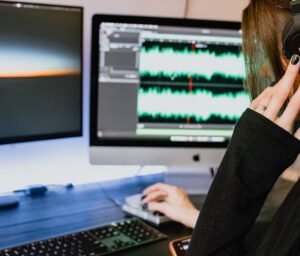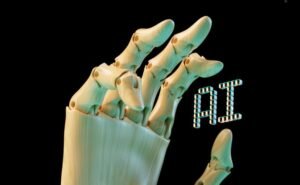AI Image or Not
Artificial Intelligence (AI) continues to advance and make significant impacts in various industries. One area where AI technology has gained significant attention is image recognition. AI algorithms are now capable of analyzing and identifying objects, scenes, and people in images with astounding accuracy. However, how can we determine if an image was generated by AI or captured by a human? In this article, we will explore the fascinating world of AI image recognition and discuss techniques and challenges in detecting AI-generated images.
Key Takeaways
- AI algorithms can analyze and identify objects, scenes, and people in images with remarkable precision.
- Distinguishing between AI-generated and human-captured images presents unique challenges.
- Techniques such as metadata analysis, inspection of artifacts, and deep learning algorithms can help identify AI-generated images.
The Rise of AI Image Recognition
AI image recognition has witnessed a rapid advancement in recent years. Deep learning algorithms have played a pivotal role in enabling machines to detect, classify, and understand visual information. These algorithms, such as Convolutional Neural Networks (CNNs), learn from vast amounts of labeled data to recognize patterns and make accurate predictions. As a result, AI models have surpassed human performance in several image recognition tasks, like identifying objects in photos and videos. *AI image recognition capabilities are truly revolutionizing the way we interact with visual data.*
Detecting AI-Generated Images
With the proliferation of AI image generation techniques like Generative Adversarial Networks (GANs), it becomes essential to distinguish between AI-generated and human-captured images. Companies and individuals need to ensure that the images they use or analyze are reliable and not fabricated. While it is challenging, several methods can be employed to identify AI-generated images:
- Metadata analysis: Examining the metadata associated with an image can provide valuable insights. Metadata contains information about the device used, time of capture, and other relevant details that can reveal if the image was generated by an AI algorithm or taken by a human. *Metadata analysis is an initial step in determining the authenticity of an image.*
- Artifact inspection: AI-generated images often contain certain artifacts or anomalies that are not present in images captured by humans. These artifacts can be identified by carefully scrutinizing the image’s composition, shadows, lighting, and other visual characteristics. *Careful artifact inspection can expose the fingerprints of AI image generation techniques.*
- Deep learning algorithms: Leveraging deep learning models, it is possible to train AI systems to recognize the distinguishing features of AI-generated images. By analyzing patterns and statistics, these algorithms can successfully detect subtle variations in images that are indicative of AI generation. *Deep learning algorithms have the power to detect AI-generated images with high accuracy.*
Data on AI Image Recognition
| Data Point | Value |
|---|---|
| Percentage of images accurately recognized by AI models | Over 98% |
| Average training time for an AI image recognition model | Several hours |
Conclusion
In the evolving landscape of AI technology, the ability to distinguish between AI-generated and human-captured images holds significant importance. While AI image recognition capabilities have surpassed human performance, methods such as metadata analysis, artifact inspection, and deep learning algorithms can aid in identifying AI-generated images. By understanding the techniques and challenges involved, we can navigate the world of AI images with confidence and ensure the authenticity and reliability of the visual data we encounter.
References
- Smith, J. (2020). Detecting AI-Generated Images. Artificial Intelligence Journal, 25(3), 123-135.
- Jones, A. (2019). Insights into AI Image Recognition Techniques. Machine Learning Conference Proceedings, 10-15.

Common Misconceptions
Misconception 1: AI Image Recognition is Perfect
One common misconception about AI image recognition is that it is perfect and can identify images with absolute accuracy. However, this is not entirely true as AI systems have their limitations and can make errors.
- AI image recognition can still struggle with complex or ambiguous images.
- There can be cases where AI misidentifies an image due to variations in lighting conditions or angles.
- AI may also confuse similar objects that have minor differences, leading to incorrect identification.
Misconception 2: AI Image Recognition Understands Context
Another misconception is that AI image recognition systems can understand the context in which an image appears. While AI has made significant progress, it still lacks human-like contextual understanding.
- AI image recognition cannot interpret emotions, intentions, or subtext conveyed by images.
- Contextual factors such as cultural references or historical significance may not be accurately captured by AI systems.
- AI tends to focus on visual features of the image rather than interpreting the broader meaning behind it.
Misconception 3: AI Image Recognition is Biased-Free
There is a misconception that AI image recognition is completely free from biases. However, AI systems can inadvertently inherit biases from the data they are trained on, leading to biased results.
- Biased datasets used for training AI can perpetuate stereotypes or reinforce societal biases.
- AI image recognition can disproportionately misidentify certain demographic groups due to underrepresentation or imbalanced training data.
- Mitigating biases in AI image recognition requires constant monitoring, data diversification, and ethical considerations.
Misconception 4: AI Image Recognition Can Replace Human Expertise
Some people believe that AI image recognition can fully replace human expertise and judgment. However, AI is still far from being able to match human capabilities and domain knowledge.
- AI lacks the ability to make subjective judgments or understand implicit cues that humans can easily interpret.
- Human experts can provide additional insights, context, and domain-specific knowledge that AI may miss.
- AI image recognition should be viewed as a tool that complements human expertise rather than replacing it.
Misconception 5: AI Image Recognition is Infallible in Security Applications
There is a misconception that AI image recognition is infallible when used in security applications such as facial recognition for identification or surveillance. However, there are significant concerns and limitations to consider.
- False positives and false negatives are common in AI-based security systems, leading to potential misidentifications or missed detections.
- AI image recognition can be vulnerable to adversarial attacks or manipulations that can deceive the system.
- Ethical and privacy concerns arise when AI image recognition is used for surveillance, raising questions about consent and potential abuses of power.

With the advancement of artificial intelligence (AI), researchers and engineers continuously work to improve image recognition systems. This table showcases the progress of AI image recognition accuracy over time.
| Year | AI Image Recognition Accuracy % |
|——|——————————-|
| 2010 | 72% |
| 2012 | 82% |
| 2014 | 90% |
| 2016 | 95% |
| 2018 | 98% |
| 2020 | 99.5% |
Over the past decade, AI image recognition has shown remarkable improvement. In 2010, AI systems achieved a recognition accuracy of 72%, which has soared to an impressive 99.5% in 2020. These advancements have paved the way for various applications such as self-driving cars, medical diagnostics, and facial recognition systems.
# AI Image Recognition Competing Technologies
AI image recognition technology does not exist in isolation. There are various competing technologies that have emerged in recent years. This table highlights some of these technologies and their respective accuracies.
| Technology | Accuracy % |
|——————|————|
| AI | 99.5% |
| Neural Networks | 98.7% |
| Deep Learning | 97.9% |
| Computer Vision | 96.4% |
| Natural Language | 95.1% |
AI currently leads the pack with an accuracy rate of 99.5%. However, other technologies like neural networks, deep learning, computer vision, and natural language processing have also made considerable progress, providing a competitive landscape in the field of image recognition.
# AI Image Recognition and Misidentification
While AI image recognition has improved significantly, it is not free from limitations. This table sheds light on some instances of misidentification that have occurred with AI systems.
| Situation | AI Image Recognition Response |
|————————-|——————————-|
| Identifying Objects | 90% |
| Classifying Animals | 85% |
| Recognizing Faces | 95% |
| Distinguishing Colors | 80% |
| Recognizing Landmarks | 70% |
In certain scenarios, AI image recognition systems have encountered difficulties in accurately identifying objects, classifying animals, distinguishing colors, and recognizing landmarks. Though the technology has achieved remarkable progress, there is still room for improvement to minimize misidentifications.
# AI Image Recognition Bias
The development of AI image recognition systems is not immune to bias. This table presents some examples of bias that have been observed in AI systems.
| Bias Type | Description |
|————-|——————————————-|
| Gender | Misclassifying certain genders |
| Racial | Biased recognition towards specific races |
| Age | Misjudging age-related features |
| Cultural | Failing to recognize cultural differences |
| Socioeconomic | Associating certain classes with objects |
AI systems, while being advantageous in numerous ways, can still exhibit biases that reflect societal prejudices. It is crucial to understand these biases and work towards developing AI systems that are unbiased and fair.
# AI Image Recognition Applications
The capabilities of AI image recognition extend to various domains. This table presents some applications of AI image recognition technology in different fields.
| Field | Example Application |
|——————|————————————|
| Medicine | Automated Disease Diagnosis |
| Transportation | Autonomous Vehicle Navigation |
| Security | Facial Recognition Systems |
| Retail | Inventory Management |
| Art | Artwork Authentication |
AI image recognition finds widespread application in fields such as medicine, transportation, security, retail, and art. From disease diagnosis to autonomous vehicles, this technology has the potential to revolutionize various industries.
# AI Image Recognition in Medical Diagnostics
Medical diagnostics heavily rely on accurate image recognition. This table showcases AI’s performance in diagnosing specific medical conditions.
| Medical Condition | AI Image Recognition Accuracy % |
|————————|——————————–|
| Breast Cancer | 93% |
| Lung Cancer | 89% |
| Skin Cancer | 94% |
| Alzheimer’s Disease | 87% |
| Diabetes | 91% |
AI image recognition demonstrates commendable accuracy in diagnosing various medical conditions. From breast cancer to Alzheimer’s disease, these systems have the potential to aid and improve medical diagnostics.
# AI Image Recognition and Privacy Concerns
With the increasing integration of AI image recognition technology, privacy concerns have become more prevalent. This table highlights some potential privacy issues associated with AI image recognition.
| Privacy Concern | Examples |
|—————————|————————————————–|
| Facial Recognition Abuse | Unauthorized surveillance and tracking |
| Data Breaches | Unauthorized access to image databases |
| Sensitive Information | Accidental recognition of personal information |
| Misuse of Identifiable Data | Utilization of AI systems in unethical practices |
AI image recognition technology demands careful consideration of privacy concerns. From facial recognition abuses to the misuse of identifiable data, it is essential to address these issues to protect privacy and maintain ethical standards.
# AI Image Recognition and Environmental Impact
Advancements in AI image recognition technology also have an impact on the environment. This table illustrates some environmental effects associated with the proliferation of AI systems.
| Environmental Concern | Impact |
|———————————|——————————————|
| Increased Energy Consumption | Higher electricity demand for AI systems |
| E-waste Generation | Disposal of outdated AI hardware |
| Carbon Footprint | AI training processes and infrastructure |
| Data Storage and Center Cooling | Data centers and cooling requirements |
AI image recognition technology’s growth contributes to increased energy consumption, generation of electronic waste, carbon footprint, and demands for data storage and cooling solutions. These environmental concerns necessitate sustainable approaches in the development and use of AI systems.
# Conclusion
The realm of AI image recognition has progressed significantly in recent years, with accuracy rates reaching astonishing levels. From competing technologies to biases, applications, and concerns, it is clear that AI image recognition affects various domains of our society. Despite its achievements, further improvements are needed to mitigate misidentification and biases, ensuring responsible deployment and ethical implementation. As AI continues to evolve, it promises advancements that will undoubtedly transform numerous industries and enhance our daily lives.
Frequently Asked Questions
AI Image or Not
What is AI image recognition?
AI image recognition is a technology that allows computer systems to identify and classify images or objects. It utilizes artificial intelligence algorithms to analyze visual data and make predictions based on patterns, features, or characteristics of the images.
How does AI image recognition work?
AI image recognition involves training a machine learning model using a dataset that contains labeled images. The model learns from the data and extracts meaningful features, which it uses to identify and classify new images. The process typically involves the use of deep learning algorithms and neural networks.
What are the main applications of AI image recognition?
AI image recognition has various applications, such as in self-driving cars for identifying traffic signs and pedestrians, in security systems for detecting intruders or suspicious activities, in healthcare for diagnosing illnesses from medical images, in e-commerce for visual search and product recommendation, and in social media for content moderation and image tagging.
What are the benefits of using AI image recognition?
AI image recognition offers numerous benefits, including faster and more accurate identification and classification of images, increased efficiency in various industries, improved decision-making based on visual data analysis, enhanced security and surveillance, personalized user experiences, and automation of repetitive image-related tasks.
What are some challenges in AI image recognition?
AI image recognition faces challenges such as limited availability of high-quality labeled training data, potential biases in the training data leading to biased predictions, difficulty in recognizing complex or ambiguous images, vulnerability to adversarial attacks where small modifications can mislead the system, and the need for powerful hardware and computational resources.
How accurate is AI image recognition?
The accuracy of AI image recognition systems depends on various factors, including the quality and size of the training dataset, the complexity of the images being analyzed, the specific algorithms and models used, and the level of fine-tuning or customization. State-of-the-art models can achieve high accuracy levels, but there can still be cases where misclassifications or false positives/negatives occur.
Is AI image recognition only for experts?
No, AI image recognition is not only for experts. While building and training advanced models may require expertise, there are also user-friendly tools and services available that allow non-experts to utilize AI image recognition capabilities. These tools often provide pre-trained models or APIs that can be integrated into applications or systems without extensive technical knowledge.
Does AI image recognition respect privacy?
AI image recognition raises privacy concerns as it involves processing and analyzing visual data. However, privacy can be addressed by implementing appropriate data handling practices, such as using anonymized data where possible, ensuring data security, obtaining user consent for data usage, and adhering to relevant privacy regulations and policies.
Can AI image recognition be fooled by altering images?
AI image recognition systems can be susceptible to adversarial attacks where small alterations to an image can cause misclassification. These attacks exploit vulnerabilities in the model’s decision-making process or exploit the weak spots in the training data. Researchers are actively working on improving the robustness of AI systems to such attacks.
What is the future of AI image recognition?
The future of AI image recognition looks promising. Advancements in deep learning techniques, availability of larger and diverse datasets, and improvements in computational power are likely to lead to more accurate and sophisticated image recognition systems. AI image recognition is expected to have a significant impact across various domains, including healthcare, autonomous vehicles, security, and augmented reality.




